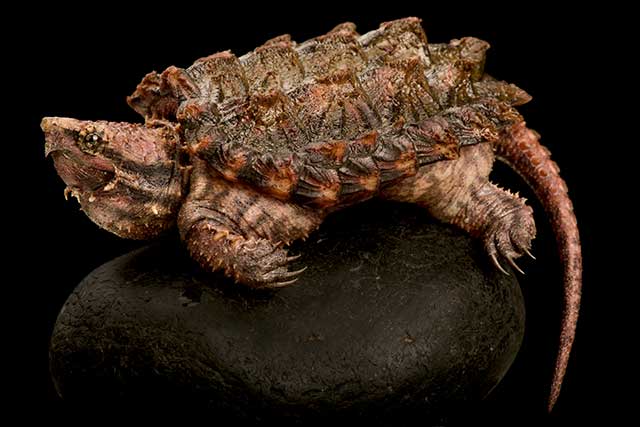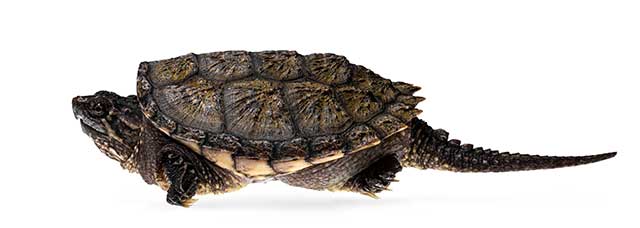If you’re considering a snapping turtle as a pet, you’re likely to encounter two popular options: the alligator snapping turtle and the common snapping turtle. Both have unique characteristics and care requirements, but which one makes a better pet for you? In this guide, we’ll delve into the world of these fascinating reptiles, exploring their differences, behaviors, and what it takes to provide them with a suitable home.
The Alligator Snapping Turtle

Appearance
The alligator snapping turtle (Macrochelys temminckii) is known for its intimidating appearance. It boasts a massive head, strong jaws, and a dark, rough shell. These reptiles can grow to impressive sizes, with some individuals reaching over 200 pounds. Their formidable appearance is complemented by a long, worm-like appendage on their tongue, which they use as a lure to catch prey.
Behavior
Alligator snapping turtles are primarily aquatic and prefer slow-moving freshwater environments. They are often solitary creatures, and their interactions with humans can be limited. While they may not be as interactive as some other types of species, they are known for their impressive hunting techniques.
Care
Caring for an alligator snapping turtle is no small feat. Their large size requires a spacious enclosure with clean water, basking areas, and proper filtration. These reptiles are primarily carnivorous, with a diet consisting of fish, crayfish, and the occasional aquatic plant. Due to their specialized needs, they are best suited for experienced reptile keepers.
The Common Snapping Turtle

Appearance
The common snapping turtle (Chelydra serpentina) is smaller in comparison to the alligator snapping. It typically has a dark-colored shell with a more streamlined body. The common snapping’s defining feature is its long tail and strong beak-like jaw that can deliver a painful bite when threatened.
Behavior
The common snapping types are often found in a variety of aquatic habitats, including ponds, lakes, and slow-moving streams. While they can be more terrestrial than their alligator snapping counterparts, they are known for occasionally sunbathing on rocks or logs. These type are also quite territorial and can display a feisty disposition when cornered.
Care
Caring for a common snapping turtle is more manageable than its alligator snapping relative, but it still requires diligence. A well-maintained enclosure with clean water and a basking spot is essential. Their diet is more varied, including fish, insects, aquatic plants, and even scavenged carrion. Common snapping species are more adaptable to captivity and are suitable for intermediate reptile enthusiasts.
Alligator Snapping vs. Common Snapping Turtle: A Comparison
Size
Alligator snapping turtles can reach massive sizes, while common snapping ones are considerably smaller. Your available space and willingness to accommodate a large reptile should influence your choice.
Temperament
Both species can be feisty when provoked, but the alligator snapping type tends to be less interactive due to their solitary nature.
Diet
Alligator snapping turtles have a more specialized diet, which may require extra effort to provide. Common snapping ones have a broader diet, making them somewhat easier to feed.
Experience Level
If you’re a seasoned reptile keeper with ample space and dedication, you might consider an alligator snapping turtle. The common snapping relative is more forgiving for those with intermediate experience levels.
Key Takeaways
In the debate of alligator snapping turtle vs. common snapping turtle as pets, there’s no one-size-fits-all answer. Your choice should depend on your experience level, space, and willingness to meet their specific care requirements. Both species offer the opportunity to observe these fascinating creatures up close, but be prepared for a long-term commitment and the responsibility that comes with keeping a pet turtle.
Remember to research and adhere to local laws and regulations regarding keeping snapping turtles as pets, as they are protected species in many areas. It’s essential to provide these remarkable reptiles with a secure and nurturing environment to ensure their well-being in captivity.
